The genus Quercus is native to the Northern Hemisphere, and includes deciduous and evergreen species. Oaks have spirally arranged leaves, with lobate margins in many species; some have serrated leaves or entire leaves with smooth edges.
Oak wood throughout history has been widely used for building purposes and many European countries once covered by oak forests have but been entirely stripped, only having first started to recover with the invention of iron or steel for building ships.
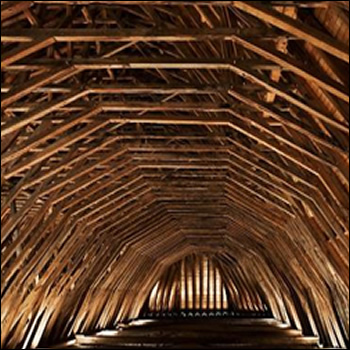
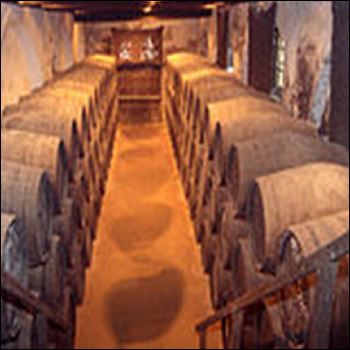
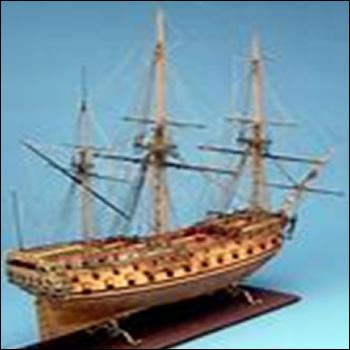
Oak is not traditionally used for bonsai in Japan, but its use began in western countries in the in the 1950s. The thick branches are easily fractured, and the tree is sensitive to root pruning. Oak is always one of the latest trees to leaf and following a harsh winter they leaf even later. The biggest enemy of oak bonsai is wind. Strong winds will quickly dehydrate any delicate buds and leaves so a sheltered position is preferable.
Hard pruning should be done in early spring before the buds open. Strong terminal buds can also be removed then. New shoots cut back leaving two leaves. Do not defoliate oaks - it would weaken them too much; you can however remove the largest leaves. Trim the upper parts of the crown because they grow stronger than the lower branches.
If oaks are wired, be careful to remove the wire before it cuts into the bark. Wire marks will be there for a very long time. Guy wires are good choice instead.
Really only suited to the informal upright style, or maybe group plantings of younger trees.
Quercus robur
This is commonly known as common oak, pedunculate oak, European oak or English oak. It is a species of flowering plant native to most of Europe. The tree is widely cultivated in temperate regions and has escaped into the wild in scattered parts of China and North America.
Latin quercus, "oak" + robur “strength”, means hard timber
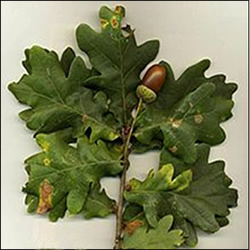
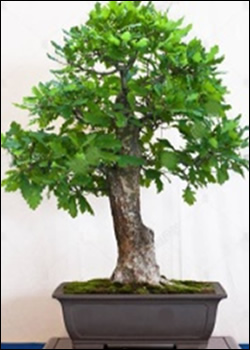
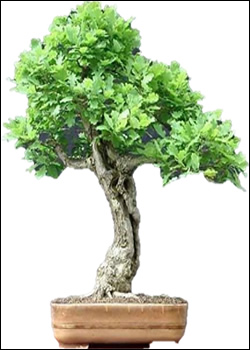
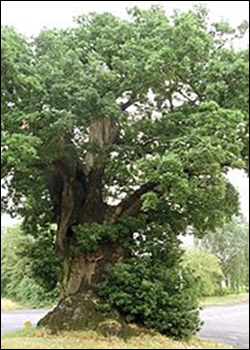
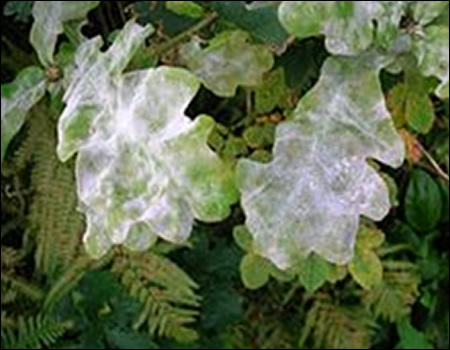
Diseases
Sudden oak decline caused by a water mould that can kill in just a few weeks; also powdery mildew can affect the leaves. Best to remove affected leaves and treat with fungicide.
Quercus ilex
Also known as the holm oak can be clipped to form a tall hedge and it is suitable for coastal windbreaks in any well drained soil. It forms a picturesque rounded head, with pendulous low-hanging branches. Its size and solid evergreen character gives it an imposing architectural presence that makes it valuable in many urban and garden settings. While holm oak can be grown in much of maritime northwestern Europe, it is not tolerant of cold continental winters.
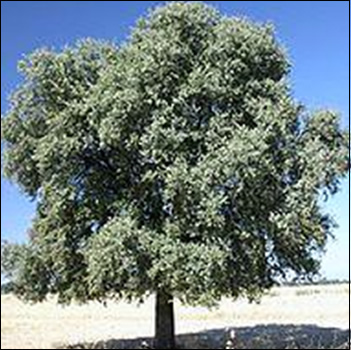
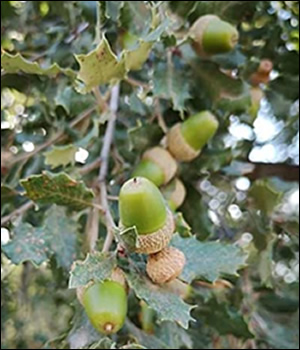
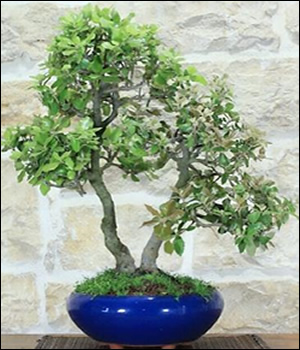
As bonsai they need winter protection and will lose some foliage unless kept well above freezing.
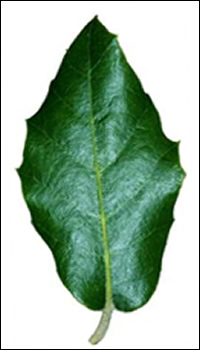
Single leaf of holm oak
Web design: nysys